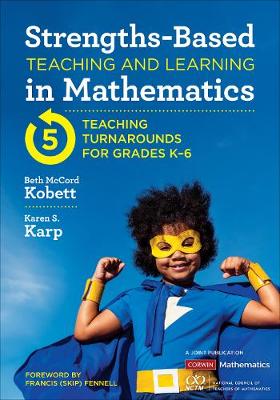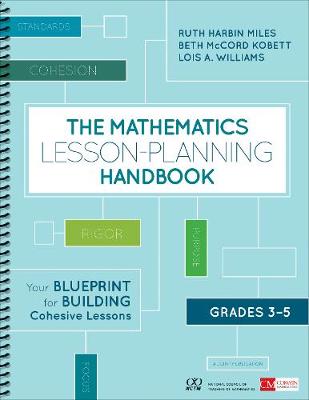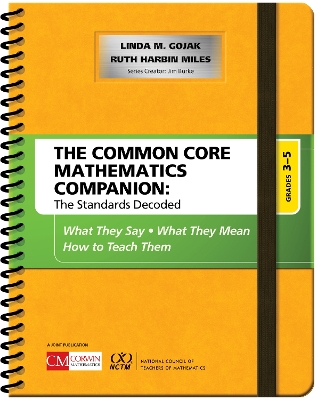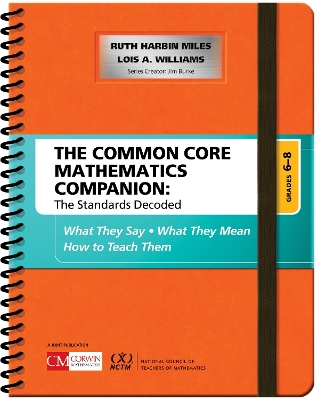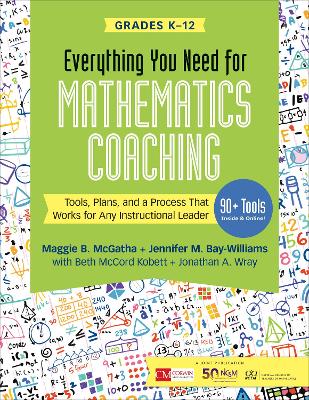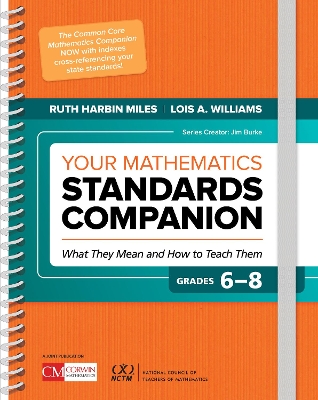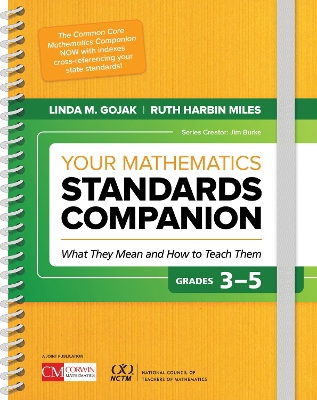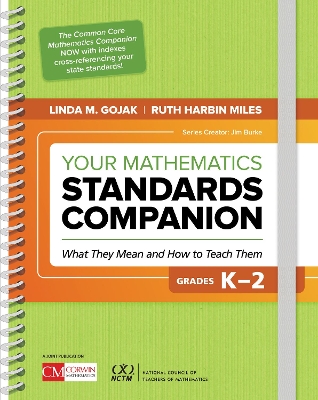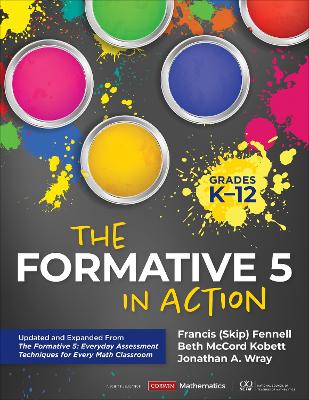Corwin Mathematics
13 total works
The Mathematics Lesson-Planning Handbook, Grades 6-8
by Lois A. Williams, Beth McCord Kobett, and Ruth Harbin Miles
Ever feel burdened by mathematics lesson planning? Your blueprint for designing Grades 6-8 math lessons that enhance state standards and address the learning needs of students is here. This indispensable handbook guides you step-by-step to plan math lessons that are purposeful, rigorous, and coherent. The effective planning process helps you
- Clarify learning intentions and connect goals to success criteria
- Structure lessons to fit traditional or block schedules
- Select the formats and tasks that facilitate questioning and encourage productive struggle
Includes a lesson-planning template and examples from Grades 6-8 classrooms. Empower yourself to plan strategically, teach with intention, and build an individualized and manageable set of mathematics lesson plans.
The Formative 5
by Francis M. Fennell, Beth McCord Kobett, and Jonathan A. Wray
Strengths-Based Teaching and Learning in Mathematics
by Beth McCord Kobett and Karen S Karp
Teaching turnarounds encourage productive struggle by identifying teacher and student strengths, designing strengths-based instruction, discovering students' points of power, and promoting strengths in the school community.
The Mathematics Lesson-Planning Handbook, Grades 3-5
by Ruth Harbin Miles, Beth McCord Kobett, and Lois A. Williams
This reference offers practical guidance for when and how to pull together mathematics routines, resources, and teaching techniques into a coherent set of lesson plans.
The Common Core Mathematics Companion: The Standards Decoded, Grades 3-5
by Linda M. Gojak and Ruth Harbin Miles
Your user’s guide to the mathematics standards
In the 12 short months since the ELA versions of The Common Core Companions, Grades K-2 and 3-5, burst on the scene, they’ve already assisted tens of thousands of teachers with the day-to-day “what you do.” Teachers’ one big criticism: what about mathematics? Luckily NCTM past-president Linda Gojak and mathematics coach Ruth Harbin Miles stepped up to the task. The result? That version of the mathematics standards you wish you had.
Page by page, The Common Core Mathematics Companions clearly lay out:
- The mathematics embedded in each standard for a deeper understanding of the content
- Examples of what effective teaching and learning look like in the classroom
- Connected standards within each domain so teachers can better appreciate how they relate
- Priorities within clusters so teachers know where to focus their time
- The three components of rigor: conceptual understanding, procedural skills, and applications
- Vocabulary and suggested materials for each grade-level band with explicit connections to the standards
- Common student misconceptions around key mathematical ideas with ways to address them
Don’t spend another minute poring over the mathematics standards. Gojak and Miles have already done the heavy-lifting for you. Focus instead on how to teach them, using The Common Core Mathematics Companion as your one-stop guide for teaching, planning, assessing, collaborating, and designing powerful mathematics curriculum.
The Common Core Mathematics Companion: The Standards Decoded, Grades 6-8
by Ruth Harbin Miles and Lois A. Williams
Everything You Need for Mathematics Coaching
by Maggie B. McGatha, Jennifer M Bay-Williams, Beth McCord Kobett, and Jonathan A. Wray
The Common Core Mathematics Companion: The Standards Decoded, Grades K-2
by Linda M. Gojak and Ruth Harbin Miles
Your user’s guide to the mathematics standards
In the 12 short months since the ELA versions of The Common Core Companions, Grades K-2 and 3-5, burst on the scene, they’ve already assisted tens of thousands of teachers with the day-to-day “what you do.” Teachers’ one big criticism: what about mathematics? Luckily NCTM past-president Linda Gojak and mathematics coach Ruth Harbin Miles stepped up to the task. The result? That version of the mathematics standards you wish you had.
Page by page, The Common Core Mathematics Companions clearly lay out:
- The mathematics embedded in each standard for a deeper understanding of the content
- Examples of what effective teaching and learning look like in the classroom
- Connected standards within each domain so teachers can better appreciate how they relate
- Priorities within clusters so teachers know where to focus their time
- The three components of rigor: conceptual understanding, procedural skills, and applications
- Vocabulary and suggested materials for each grade-level band with explicit connections to the standards
- Common student misconceptions around key mathematical ideas with ways to address them
Don’t spend another minute poring over the mathematics standards. Gojak and Miles have already done the heavy-lifting for you. Focus instead on how to teach them, using The Common Core Mathematics Companion as your one-stop guide for teaching, planning, assessing, collaborating, and designing powerful mathematics curriculum.
The Mathematics Lesson-Planning Handbook, Grades K-2
by Beth McCord Kobett, Ruth Harbin Miles, and Lois A. Williams
Plan K-2 math lessons that are purposeful, rigorous, and coherent, and discover your blueprint for building an exceptional foundation in math for your students.
Your Mathematics Standards Companion, Grades 6-8
by Ruth Harbin Miles and Lois A. Williams
Your Mathematics Standards Companion, Grades 3-5
by Linda M. Gojak and Ruth Harbin Miles
Your Mathematics Standards Companion, Grades K-2
by Linda M. Gojak and Ruth Harbin Miles
The Formative 5 in Action, Grades K-12
by Francis (Skip) Fennell, Beth McCord Kobett, and Jonathan A. Wray
Leverage formative assessment in mathematics every single day
For fans of the bestselling book The Formative 5: Everyday Assessment Techniques for Every Math Classroom comes this updated and expanded edition for understanding and implementing highly effective, research-backed formative assessment techniques into seamless, daily practice with students in grades K-12. The Formative 5 in Action serves as an interactive guide that steers teachers toward successful implementation of the formative five techniques of observation, interviews, Show Me, hinge questions, and exit tasks. This updated guidebook offers:
- More than 120 minutes of video examples of the five techniques in action in real K-12 classrooms, showing teachers not just what to do but how to do it
- An engaging format with built-in reflection exercises and activities that foster both individual professional learning and promote PLC study through discussion and collaboration
- An explicit emphasis on providing effective and timely feedback to students, while harnessing student strengths throughout teaching and learning
- Comprehensive responses to teachers’ frequently asked questions that have surfaced since the publication of the first edition
The research is clear – the authors’ five formative assessment techniques lead to greater attention to planning and stronger instruction for teachers and better achievement for students. The Formative 5 in Action is a truly engaging resource that helps mathematics teachers and instructional leaders engage in classroom-based formative assessment with precision, intentionality, and ease.


